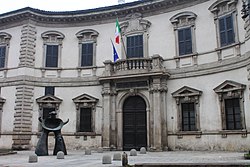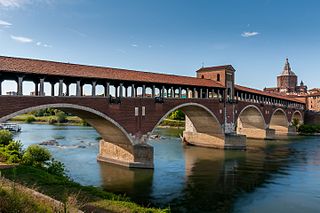
Pavia is a town and comune of south-western Lombardy, in Northern Italy, 35 kilometres south of Milan on the lower Ticino near its confluence with the Po. It has a population of c. 73,086.
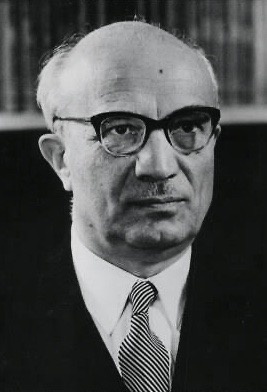
Amintore Fanfani was an Italian politician and statesman, who served as 32nd prime minister of Italy for five separate terms. He was one of the best-known Italian politicians after the Second World War and a historical figure of the left-wing faction of Christian Democracy. He is also considered one of the founders of the modern Italian centre-left.

Fernando Tambroni Armaroli was an Italian politician. A member of Christian Democracy, he served as the 36th Prime Minister of Italy from March to July 1960. He also served as Minister of the Interior from July 1955 until February 1959, Minister of Budget and Treasury from February 1959 to March 1960, and Minister of the Merchant Navy from August 1953 until July 1955.

The properties of the Holy See are regulated by the 1929 Lateran Treaty signed with the Kingdom of Italy. Although part of Italian territory, some of them enjoy extraterritoriality similar to those of foreign embassies, including tax exemptions. Nonetheless, those visiting these properties are generally required to follow the immigration rules of Italy. For example, American seminarians at the Pontifical North American College need an Italian visa, despite residing, and studying, in extraterritorial property of the Holy See.

The Senate of the Republic, or simply the Senate, is the upper house of the bicameral Italian Parliament, the lower house being the Chamber of Deputies. The two houses together form a perfect bicameral system, meaning they perform identical functions, but do so separately. Pursuant to the Articles 57, 58, and 59 of the Italian Constitution, the Senate has 200 elective members, of which 196 are elected from Italian constituencies, and 4 from Italian citizens living abroad. Furthermore, a small number serve as senators for life, either appointed or ex officio. It was established in its current form on 8 May 1948, but previously existed during the Kingdom of Italy as Senato del Regno, itself a continuation of the Senato Subalpino of Sardinia established on 8 May 1848. Members of the Senate are styled Senator or The Honourable Senator and they meet at Palazzo Madama, Rome.
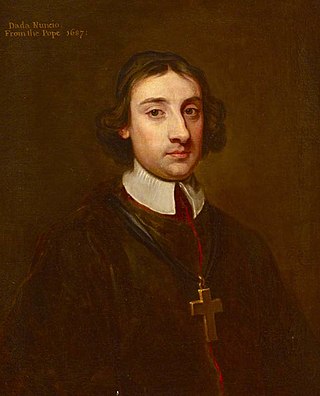
Ferdinando d'Adda was a Roman Catholic Cardinal, bishop and diplomat. As a member of the family of the counts of Adda, he was a kinsman of Pope Innocent XI, who conferred upon him the titular abbacy of a famous abbey.

Pellegrino Tibaldi, also known as Pellegrino di Tibaldo de Pellegrini, was an Italian mannerist architect, sculptor, and mural painter.

Piazza dei Cavalieri is a landmark in Pisa, Italy, and the second main square of the city. This square was the political centre in medieval Pisa. After the middle of 16th century the square became the headquarters of the Order of the Knights of St. Stephen. Now it is a centre of education, being the main house of the Scuola Normale di Pisa, a higher learning institution part of the University.
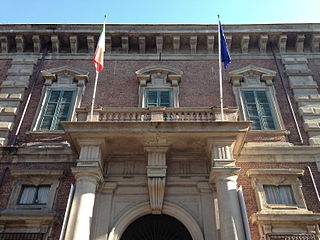
Palazzo Brera or Palazzo di Brera is a monumental palace in Milan, in Lombardy in northern Italy. It was a Jesuit college for two hundred years. It now houses several cultural institutions including the Accademia di Brera, the art academy of the city, and its gallery, the Pinacoteca di Brera; the Orto Botanico di Brera, a botanical garden; an observatory, the Osservatorio Astronomico di Brera; the Istituto Lombardo Accademia di Scienze e Lettere, a learned society; and an important library, the Biblioteca di Brera.

Novara is the capital city of the province of Novara in the Piedmont region in northwest Italy, to the west of Milan. With 101,916 inhabitants, it is the second most populous city in Piedmont after Turin. It is an important crossroads for commercial traffic along the routes from Milan to Turin and from Genoa to Switzerland. Novara lies between the streams Agogna and Terdoppio in northeastern Piedmont, 50 km (31 mi) from Milan and 95 km (59 mi) from Turin. It is only 15 km (9.3 mi) distant from the river Ticino, which marks the border with Lombardy region.
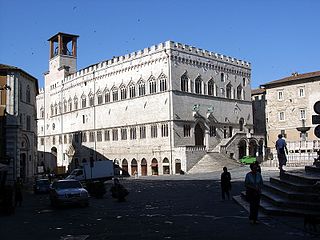
The Palazzo dei Priori or comunale is one of the best examples in Italy of a public palace from the communal era. It is located in the central Piazza IV Novembre in Perugia, Umbria. It extends along Corso Vannucci up to Via Boncambi. It still houses part of the municipality, and, on the third floor, the Galleria Nazionale dell'Umbria. It takes its name from the Priori, the highest political authority governing the city in the medieval era.

The Palazzo del Collegio Puteano is a building in Piazza dei Cavalieri in Pisa, Italy. The palace occupies the whole western part of the square and makes a corner with Via Corsica street.
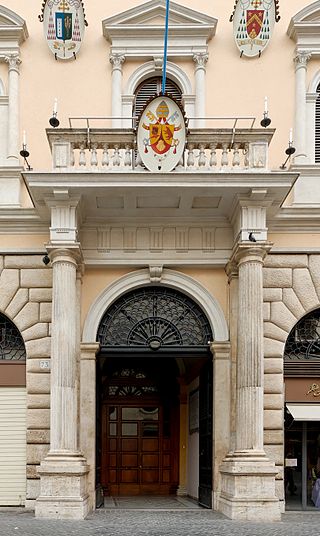
The Roman Colleges, also referred to as the Pontifical Colleges in Rome, are institutions established and maintained in Rome for the education of future ecclesiastics of the Catholic Church. Traditionally many were for students of a particular nationality. The colleges are halls of residence in which the students follow the usual seminary exercises of piety, study in private, and review the subjects treated in class. In some colleges there are special courses of instruction but the regular courses in philosophy and theology are given in a few large central institutions, such as Pontifical Urbaniana University, the Pontifical Gregorian University, the Pontifical Lateran University, and the Pontifical University of Saint Thomas Aquinas, known as the Angelicum.

Ignazio Benito Maria La Russa is an Italian politician who is serving as president of the Senate of the Republic since 13 October 2022. He is the first politician with a neo-fascist background to hold the position of President of the Senate, the second highest-ranking office of the Italian Republic.
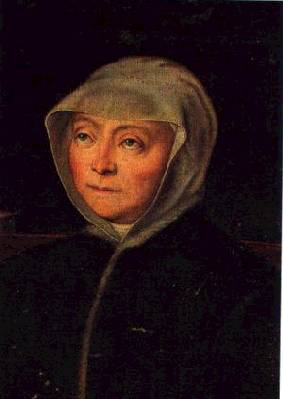
Ludovica Torelli was ruling Countess of Guastalla in 1522–1539. A philanthropist, she was instrumental in the founding of two religious institutes for woman: the Angelic Sisters of Saint Paul and the "Collegio della Guastalla"/"Daughters of Mary".
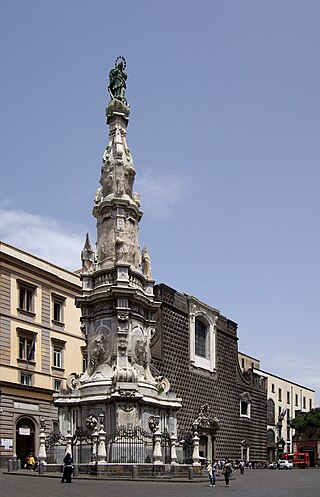
Giuseppe Valeriano was an Italian painter and architect, priest of the Jesuit order, and active in Rome, Spain, and Naples.

Piazza d'Aracoeli is a square of Rome (Italy), placed at the base of the Capitoline Hill, in the Rione X Campitelli.

Mirasole Abbey is a monastery in the comune of Opera near Milan, Lombardy, Northern Italy. The monastery was initially founded by the Humiliati in the 13th century. The buildings have had diverse uses over the centuries. Since 2013, houses a community of the Premonstratensians.
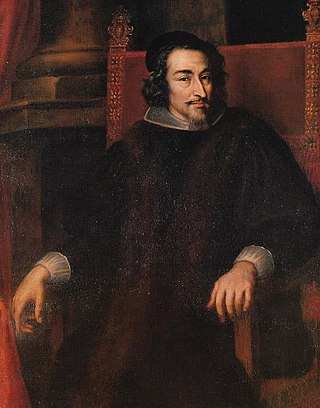
Bartolomeo III Arese count of Castel Lambro born in Milan on 23 October 1590 and died in the same city on 23 September 1674 was an Italian nobleman, politician, and prominent member of the House of Arese.

The Magistrato alla Sanità was the office of the Republic of Venice definitively instituted in 1490 to manage public health in the city of Venice and its territories, with specific attention on preventing the spread of epidemics within the maritime republic. The magistracy was among the first health authorities in Europe to institute public inoculation projects to prevent the spread of infectious diseases.
